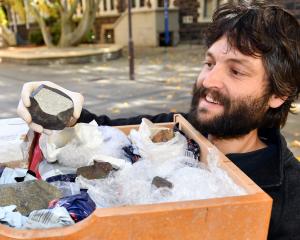University of Otago sport and exercise sciences researcher Dr Tina van Duijn said it was important to be able to perform a movement in the water that was both energetically and cognitively economic during an emergency.
"You should still be able to perform it while in panic, or while assessing the environment, making decisions, or even alerting people who might be able to help you."
Her study involved monitoring the physical and cognitive demands of four common treading techniques.
Those techniques included "running" in the water, the "flutter kick" with hands sculling, "upright breaststroke" and the "egg beater", where the legs alternate breaststroke kicks.

It was the egg beater technique that came out on top, closely followed by the upright breaststroke one.
A possible reason for the egg beater being the most economic could be because a different physical force was generated when performing sculling movements, compared with kicking and pushing movements, Dr van Duijn said.
However, it was also for that reason she was surprised to find the upright breaststroke technique proved almost as good, despite including a recovery phase.
If someone needed to lift their hands out of water to grab something or signal for help, the egg beater would likely be the best solution to stay level.
As for the running and flutter kick techniques, they were significantly more physically and mentally demanding.
Dr van Duijn hoped her research would emphasise the importance of teaching water treading techniques that withstood the effects of panic, fatigue and multi-tasking.
The next step in her work to support "evidence-based water safety instruction" would be to test the techniques on less-experienced swimmers, and in different swimming environments.
Comments
About 50 years ago as one of a group of Kiwi Club swimmers we were involved in an Otago Uni. research study about fully clothed "drown proofing" as it as called. After being shown how to trap air in our clothes we spent about half an hour in the harbour off Vauxhall Boat Club, using this technique and also another of floating vertically and moving our arms up and down to raise our heads out of the water to breathe. I never did hear about the results but we had fun.











